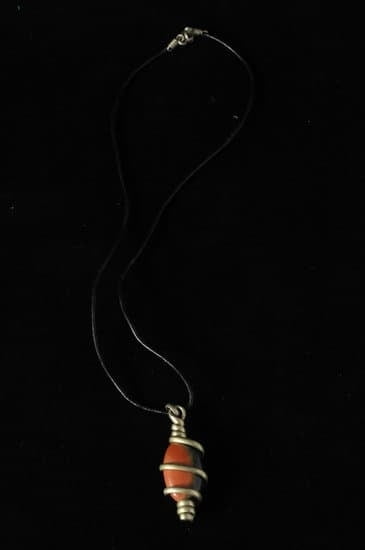The rich history of Mexican jewelry spans thousands of years, reflecting the diverse cultural influences and artistic traditions that have shaped this vibrant craft. From the ancient pre-Hispanic era to the modern-day revival of traditional techniques, Mexican jewelry holds a special significance in both its beauty and symbolism.
In the pre-Hispanic era, Mexican jewelry was deeply rooted in the traditions and beliefs of ancient civilizations such as the Aztecs, Maya, and Olmecs. These early artisans utilized natural materials such as jade, turquoise, and gold to create intricate pieces that were not only decorative but also held spiritual significance. The arrival of the Spanish conquistadors marked a shift in Mexican jewelry making, as European designs and techniques merged with indigenous craftsmanship to create a unique fusion of styles.
The cultural significance of Mexican jewelry extends beyond its aesthetic appeal, with each piece often carrying symbolic meanings tied to folklore, spirituality, and tradition. The artistry and craftsmanship behind these pieces are notable for their intricate detailing and meticulous techniques that have been passed down through generations. Over time, Mexican jewelry has evolved to incorporate a wide range of materials, from traditional gemstones to modern innovations, creating a dynamic and ever-evolving craft.
Pre-Hispanic Era
The pre-Hispanic era of Mexico holds a rich and diverse history of jewelry making, dating back to as early as 200 B.C. The indigenous peoples of Mesoamerica, such as the Maya, Aztec, and Olmec, were skilled artisans who crafted intricate jewelry using a variety of techniques and materials. From elaborate headdresses to ornate adornments, ancient Mexican jewelry was not only a form of personal adornment but also held deep cultural and religious significance.
One of the most iconic forms of pre-Hispanic Mexican jewelry is the use of jade, turquoise, obsidian, and other semiprecious stones. These gemstones were highly valued and often reserved for nobility or for ceremonial purposes. Gold was also utilized in jewelry making by these ancient civilizations, symbolizing wealth and prestige. The craftsmanship of these early Mexican jewelers is evident in the detail and precision of their work, reflecting their advanced understanding of metallurgy and lapidary arts.
Furthermore, the symbolism behind pre-Hispanic Mexican jewelry is a reflection of the spiritual beliefs and traditions of these ancient cultures. Many pieces were adorned with motifs representing deities, animals, and celestial bodies, each holding sacred meaning. For example, the Aztecs incorporated intricate animal designs into their jewelry to honor their gods and bring protection to the wearer. These symbolic elements added depth and significance to each piece of jewelry, making them more than just decorative items.
When Spanish conquistadors arrived in Mexico in the 16th century, they brought new materials and techniques that would influence Mexican jewelry making. This marked a significant turning point in the history of Mexican jewelry as it began to merge with European styles while still maintaining its indigenous roots.
| Pre-Hispanic Jewelry | Data |
|---|---|
| Main Materials | Jade, turquoise, obsidian, gold |
| Symbolism | Represented deities, animals, celestial bodies |
Influence of Spanish Conquest
Introduction to Spanish Influence
The Spanish conquest of Mexico in the 16th century had a profound impact on the evolution of Mexican jewelry. The arrival of the conquistadors brought with it new techniques, materials, and designs that would forever change the landscape of indigenous jewelry-making in the region.
Integration of European Styles
With the arrival of the Spanish, traditional pre-Hispanic jewelry techniques were influenced by European metalworking methods. Spanish silversmiths introduced their expertise in filigree, repoussé, and granulation, which were incorporated into Mexican jewelry-making. This fusion of styles resulted in a unique blend of indigenous and colonial aesthetics, giving birth to distinct Mexican jewelry styles that are still appreciated today.
Religious Influence
In addition to technical advancements, the Spanish conquest also brought about a shift in the symbolism and motifs used in Mexican jewelry. Christianity played a major role in influencing the iconography found in local ornamentation. Crosses, saints, and religious symbols became prominent features in Mexican jewelry as indigenous artisans adapted to produce items that catered to the tastes and beliefs of Catholic colonizers.
The history of Mexican jewelry would not be complete without recognizing the significant impact of the Spanish conquest. The integration of European styles and religious influence contributed to a rich tapestry of cultural expression that continues to shape contemporary jewelry-making practices in Mexico.
Cultural Significance
Mexican jewelry holds a deep cultural significance, often representing more than just adornment. Throughout history, Mexican jewelry has been used to convey symbolism and beliefs, reflecting the rich and diverse culture of the country. From ancient pre-Hispanic civilizations to modern-day traditions, the symbolic meaning behind Mexican jewelry continues to be an integral part of its allure.
In the pre-Hispanic era, Mexican jewelry was intricately connected to religious beliefs and rituals. The Aztecs, Mayans, and other indigenous groups used materials such as jade, turquoise, and gold to create jewelry that symbolized deities, fertility, and various cosmic elements. These intricate pieces were not only a form of self-expression but also held spiritual significance within their communities.
With the arrival of the Spanish conquistadors in the 16th century, Mexican jewelry underwent a fusion of cultures. European styles and techniques were introduced and intertwined with traditional indigenous craftsmanship. This melding of influences resulted in unique pieces that reflected both the history and traditions of Mexico. Symbols of Catholicism were incorporated into jewelry designs alongside traditional Mesoamerican motifs, creating a distinctive blend of cultural symbolism.
Today, Mexican jewelry continues to carry symbolic meanings that honor the country’s heritage. From intricate beading techniques used by indigenous communities like the Huichol people to the renowned silverwork from Taxco, each piece holds a story deeply rooted in Mexican history. Whether worn for special ceremonies or as everyday adornment, Mexican jewelry remains a powerful representation of cultural pride and tradition.
Notable Techniques
Mexican jewelry has a rich and diverse history that is deeply rooted in artistry and craftsmanship. The techniques used in crafting Mexican jewelry have been passed down through generations, resulting in the creation of stunning and intricate pieces that showcase the skill and talent of the artisans. Here are some notable techniques that are synonymous with the artistry of Mexican jewelry:
- Filigree: Filigree work is a prominent technique in Mexican jewelry, characterized by the use of delicate threads of gold or silver to create intricate designs. This technique requires precision and attention to detail, resulting in stunning pieces that often feature ornate patterns and motifs.
- Repoussé: The repoussé technique involves hammering metal from the reverse side to create a design in relief. This technique has been used for centuries in Mexican jewelry making, particularly in the creation of decorative pendants, earrings, and cuffs.
- Lost-Wax Casting: This ancient technique involves creating a mold from a wax model, which is then melted away to make space for molten metal. Mexican artisans have perfected this method over time, allowing them to produce intricately detailed pieces such as pendants, rings, and bracelets.
These techniques require a high level of skill and expertise, and they are a testament to the artistry and craftsmanship that is synonymous with Mexican jewelry. The result is an array of exquisite pieces that reflect the cultural heritage and tradition of Mexico.
Mexican jewelry artisans continue to honor these traditional techniques while also incorporating modern innovations to push the boundaries of their craft. Whether it’s through the use of new materials or experimenting with different methods, the legacy of these notable techniques continues to thrive in modern Mexican jewelry making.
Overall, these notable techniques are integral to the artistry and craftsmanship of Mexican jewelry, showcasing the dedication and skill of its artisans throughout history. From filigree work to lost-wax casting, these techniques have played a significant role in shaping the timeless legacy of Mexican jewelry.
Materials Used
Throughout the history of Mexican jewelry, a wide variety of materials have been used to create stunning pieces that showcase the artistry and craftsmanship of the region. From traditional gemstones to modern innovations, these materials play a crucial role in the beauty and significance of Mexican jewelry.
Traditional Gemstones
In the pre-Hispanic era, indigenous people used several traditional gemstones and minerals to create jewelry. These included turquoise, jade, obsidian, and amethyst, among others. These gemstones were highly prized for their vibrant colors and believed to hold spiritual and protective properties.
Spanish Influence
With the arrival of the Spanish conquistadors, new materials such as silver and gold were introduced to Mexico. This significantly influenced the evolution of Mexican jewelry, as these metals became widely used in creating intricate pieces that blended traditional techniques with European styles.
Modern Innovations
In modern times, Mexican jewelry continues to evolve with the use of contemporary materials such as stainless steel, copper, glass beads, and even plastics. These innovations allow for more experimentation in design and creation while still paying homage to the rich history of Mexican jewelry.
The diverse range of materials used in Mexican jewelry reflects not only its historical roots but also its adaptability to changing tastes and trends. From ancient gemstones to modern innovations, these materials are a testament to the enduring legacy of Mexican jewelry.
Famous Mexican Jewelry Styles
Mexican jewelry has a rich and diverse history, with various styles that have gained recognition worldwide. One of the most famous styles of Mexican jewelry is Taxco Silver, which originated in the colonial city of Taxco. This style is known for its use of sterling silver and intricate designs, often inspired by pre-Hispanic motifs. Taxco Silver jewelry is celebrated for its quality craftsmanship and has become a symbol of Mexican artistry.
Another notable style of Mexican jewelry is Huichol beading, which originates from the indigenous Huichol people of west-central Mexico. This type of jewelry is characterized by its vibrant colors and intricate beadwork, often depicting traditional symbols and spiritual motifs. The intricate and detailed patterns found in Huichol beading have captured the attention of collectors and fashion enthusiasts around the world.
In addition to these styles, there are also other well-known Mexican jewelry traditions such as filigree work from Oaxaca and Chiapas amber jewelry. These styles showcase the diversity and creativity within Mexican jewelry making, each with its own unique techniques and cultural significance.
The popularity of these famous Mexican jewelry styles has not only contributed to the country’s tourism industry but has also played a significant role in preserving traditional craftsmanship and heritage. These iconic styles continue to inspire contemporary artisans to uphold the legacy of Mexican jewelry making.
| Famous Mexican Jewelry Styles | Description |
|---|---|
| Taxco Silver | Originated in Taxco, known for sterling silver and intricate designs |
| Huichol Beading | Originates from the Huichol people; characterized by vibrant colors and intricate beadwork |
| Filigree Work from Oaxaca | Known for delicate metalwork often seen in earrings, necklaces, and bracelets |
| Chiapas Amber Jewelry | Showcases unique amber stones found in Chiapas; popular for its natural beauty |
Modern Day Mexican Jewelry
In recent years, there has been a revival of traditional techniques and styles in Mexican jewelry-making. This resurgence is a testament to the enduring beauty and cultural significance of Mexico’s jewelry traditions. Here are some notable aspects of the modern day Mexican jewelry scene:
- Preservation of Traditional Techniques: Many contemporary Mexican jewelers have made it their mission to preserve ancient jewelry-making techniques that have been passed down through generations. Techniques such as filigree, granulation, and repoussé are being revived and incorporated into modern designs, keeping centuries-old traditions alive.
- Incorporation of Indigenous Symbols: Modern Mexican jewelry often features indigenous symbols and motifs that hold deep cultural and spiritual significance. These symbols may include depictions of animals, geometric patterns, and religious icons that pay homage to Mexico’s rich history and diverse indigenous cultures.
- Sustainable Practices: In today’s global climate, there is a growing emphasis on sustainable and ethical practices in the jewelry industry. Many contemporary Mexican jewelers are embracing environmentally friendly practices by using recycled metals, ethically sourced gemstones, and eco-conscious production methods.
The modern day Mexican jewelry scene reflects a renaissance of traditional craftsmanship and cultural pride. With a renewed focus on preserving heritage techniques, celebrating indigenous symbolism, and embracing sustainable practices, Mexican jewelry continues to captivate the world with its timeless beauty and rich cultural heritage. The history of Mexican jewelry is not just a thing of the past – it is a living art form that continues to evolve while staying true to its roots.
Conclusion
In conclusion, the history of Mexican jewelry is a rich tapestry that reflects the cultural, artistic, and spiritual traditions of Mexico. From its origins in the pre-Hispanic era to the influence of Spanish conquest, Mexican jewelry has evolved over centuries while retaining its unique identity and significance.
The symbolism and beliefs behind Mexican jewelry continue to play a vital role in shaping its designs and styles, making it not just an adornment but a reflection of the country’s heritage.
The artistry and craftsmanship of Mexican jewelry are truly remarkable, with techniques passed down through generations and materials ranging from traditional gemstones to modern innovations. Styles such as Taxco Silver and Huichol beading have gained international recognition, showcasing the diverse creativity and skill of Mexican artisans. Furthermore, the modern-day revival of traditional techniques and styles ensures that the legacy of Mexican jewelry continues to thrive and inspire new generations.
In essence, the history of Mexican jewelry is a testament to the resilience and ingenuity of Mexican culture. Its timeless legacy has made a lasting impact on the global jewelry industry while preserving its roots and traditions. As we appreciate the beauty of Mexican jewelry, we also pay homage to its enduring legacy and influence throughout history.
Frequently Asked Questions
What Is the Significance of Jewelry in Mexican Culture?
Jewelry holds significant cultural and symbolic importance in Mexican culture. It is often worn as a way to showcase personal style, wealth, and heritage. Many pieces of jewelry also hold spiritual or religious significance, such as the use of cross necklaces or Virgin Mary pendants.
What Is the Most Popular Jewelry in Mexico?
The most popular jewelry in Mexico includes traditional pieces such as silver earrings, bracelets, and necklaces adorned with intricate designs. Silver is highly favored in Mexican jewelry due to its abundance in the country and its historical significance in pre-Columbian civilizations. Additionally, colorful gemstones like turquoise and jade are commonly used in Mexican jewelry.
What Does Mexico Mean on Jewelry?
In Mexican jewelry, the word “Mexico” often serves as a mark of authenticity and origin. This inscription on jewelry signifies that the piece was made in Mexico and may also indicate the purity of the silver or gold used. This stamp adds value to the jewelry and reassures buyers of its quality and authenticity.

Welcome to my jewelry blog! My name is Sarah and I am the owner of this blog.
I love making jewelry and sharing my creations with others.
So whether you’re someone who loves wearing jewelry yourself or simply enjoys learning about it, be sure to check out my blog for insightful posts on everything related to this exciting topic!





